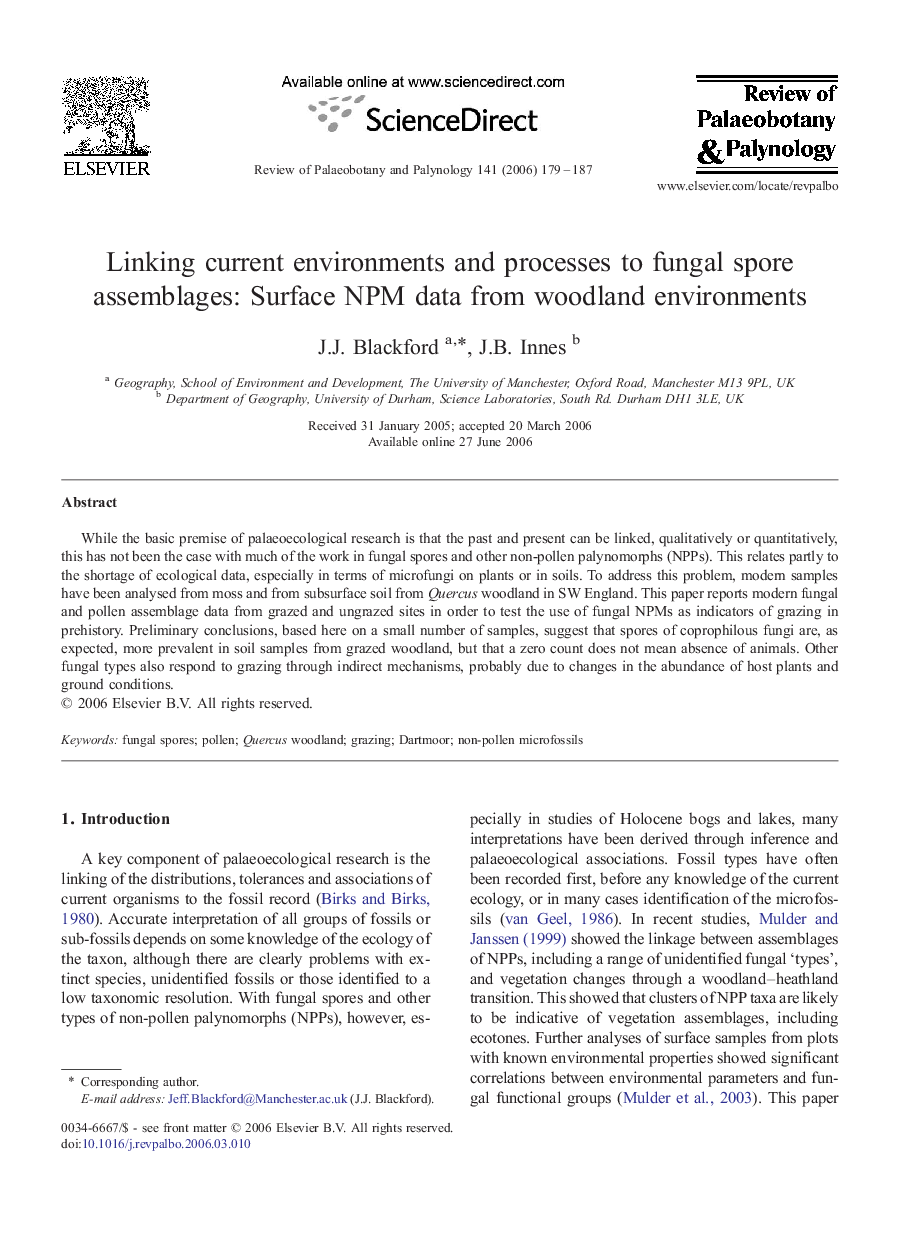| Article ID | Journal | Published Year | Pages | File Type |
|---|---|---|---|---|
| 4751253 | Review of Palaeobotany and Palynology | 2006 | 9 Pages |
Abstract
While the basic premise of palaeoecological research is that the past and present can be linked, qualitatively or quantitatively, this has not been the case with much of the work in fungal spores and other non-pollen palynomorphs (NPPs). This relates partly to the shortage of ecological data, especially in terms of microfungi on plants or in soils. To address this problem, modern samples have been analysed from moss and from subsurface soil from Quercus woodland in SW England. This paper reports modern fungal and pollen assemblage data from grazed and ungrazed sites in order to test the use of fungal NPMs as indicators of grazing in prehistory. Preliminary conclusions, based here on a small number of samples, suggest that spores of coprophilous fungi are, as expected, more prevalent in soil samples from grazed woodland, but that a zero count does not mean absence of animals. Other fungal types also respond to grazing through indirect mechanisms, probably due to changes in the abundance of host plants and ground conditions.
Keywords
Related Topics
Physical Sciences and Engineering
Earth and Planetary Sciences
Palaeontology
Authors
J.J. Blackford, J.B. Innes,
